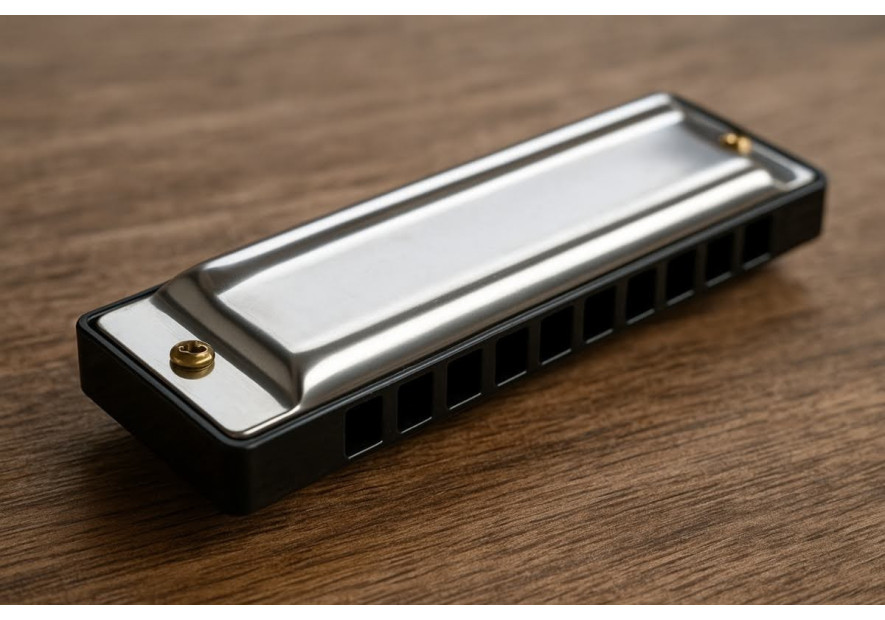How to Play Single Notes on a Harmonica [A 6-Step Guide]
![How to Play Single Notes on a Harmonica [A 6-Step Guide]](/img/anblog/b/b-68af2a48d92a3-anblog_thumb.jpg)
Producing a clean, clear note on the harmonica is one of the first challenges beginners face. It seems simple: you breathe in or out through the instrument, and sound comes out.
But the real magic begins when you focus on playing single notes on a harmonica, separating them from the surrounding sounds, and creating melodies that truly shine.
Once you master this, the door opens to everything from blues licks to classical riffs, making the harmonica a versatile and deeply expressive instrument.
Why Single Notes Matter More Than You Think
Imagine trying to hum a favorite tune but ending up with several random pitches at once.
That’s what happens when multiple holes on the harmonica sound together unintentionally. Chords can be beautiful, but when you’re aiming for a melody, clarity is everything. Single notes allow you to:
- Play recognizable songs without muddy sound.
- Bend notes (a signature harmonica technique) more effectively.
- Control dynamics—soft and loud—much more easily.
- Lay the foundation for improvisation and soloing.
It’s a bit like learning to walk before you run. That’s why learning to play a single note on the harmonica is worth every minute of practice.
Without single notes, every harmonica performance feels like background noise rather than music with intention.
Step 1: Get the Right Posture and Grip
Before even focusing on your mouth, start with how you hold the instrument. Poor hand position and grip are some of the most common harmonica mistakes beginners make.
Rest the harmonica between your thumb and index finger of your left hand, with your right hand cupped around it to create a resonant chamber. Keep your shoulders relaxed.
.jpg)
Good posture encourages proper airflow, which is half the battle when it comes to playing with precision.
A small detail many beginners overlook: keep your head still and move the harmonica side to side instead of shifting your entire face. This subtle adjustment reduces tension and keeps your technique consistent.
Step 2: The Pucker Method (The Classic Approach)
The most common way to isolate notes is called the “pucker” or “lip purse.” Here’s how:
- Place the harmonica gently against your lips.
- Narrow your lips as if you’re whistling.
- Aim your breath into a single hole, keeping the others covered by your lips but not engaged.
At first, the sound may still be fuzzy, but with steady airflow and relaxed lips, you’ll find the sweet spot where only one note rings out. Practice this slowly across the instrument, hole by hole, breathing in and out.
One common mistake? Tightening the lips too much. This creates tension, reduces tone, and actually makes it harder to control airflow. Think “relaxed whistle” rather than “pinched straw.”
Step 3: The Tongue Block Method (For Richer Tone)
Another popular way to achieve single notes, and a favorite among blues players, is the tongue block method. Here’s how it works:
- Place your mouth over four holes instead of one.
- Use your tongue to block three of them.
- Let only the unblocked hole produce sound.
This method not only gives you a warmer, thicker tone but also sets you up for advanced techniques like tongue slaps and octaves. It might feel strange at first, but many players eventually prefer tongue blocking for its musical flexibility.
Step 4: Control Your Breath, Control Your Sound
Breath control is what separates a beginner from a confident player. Instead of blowing hard, think of gentle, steady airflow, almost like you’re sighing.
Overblowing makes the sound shrill and can damage reeds over time. Controlled breathing, on the other hand, keeps your notes clear and consistent.
.jpg)
Try practicing long tones: hold one note for as long as you can without losing quality.
This exercise trains your diaphragm and helps you understand how much air the harmonica really needs, which is far less than you might think.
Step 5: Train with Simple Songs
Theory and drills are great, but nothing cements learning like music itself. Start with simple, beginner-friendly techniques and familiar melodies such as “Ode to Joy” or “Mary Had a Little Lamb.”
These tunes rely on single notes and give you an immediate sense of progress.
Here’s where playing single notes on a harmonica really clicks: once you can play a melody recognizable to anyone, even on a basic diatonic harmonica, you’ll feel the motivation to push further.
Step 6: Add Expression Through Articulation
Once you’ve got clarity, the next step is personality. Use your tongue to add light articulations (like saying “ta” or “da” as you play).
Slight bends in pitch can also make your playing more emotional. Even small variations in dynamics, softening one note, swelling the next, turn a simple tune into a performance that feels alive.
Common Roadblocks and How to Overcome Them
- Multiple holes sounding at once: Go back to slow practice with the pucker method. Don’t rush.
- Running out of breath quickly: Focus on controlled, steady airflow rather than forcing the sound.
- Notes sound weak or airy: Adjust your lip position and relax your mouth. Often, less pressure leads to stronger tones.
Remember, these issues are part of the process. Every player struggles with them, and the solution is usually patience and consistency.
Practice Tips That Actually Work
- Set aside five to ten minutes a day just for single note exercises. Consistency beats long, irregular sessions.
- Use a tuner app to check the pitch of your notes. This helps you notice whether bends or weak airflow are affecting clarity.
- Record yourself. Sometimes the difference between what you feel and what others hear is surprising.
Over time, these small habits will polish your playing and give you confidence in any musical setting.
Conclusion: Bring Clarity to Your Harmonica Journey
Mastering single notes is more than a technical skill—it’s the foundation of expressive, melodic playing.
When you commit to steady practice, posture awareness, and techniques like puckering or tongue blocking, playing single notes on a harmonica becomes second nature. From there, you can bend, improvise, and explore any style you like.
And if you’re looking for instruments designed with precision and responsiveness to make learning smoother, HARMO offers premium-quality harmonicas, crafted by musicians for musicians.
With the right tools in hand, your journey to clean, soulful melodies becomes that much more enjoyable. Reach out today if you have any questions! We’d be happy to chat.



Leave a comment